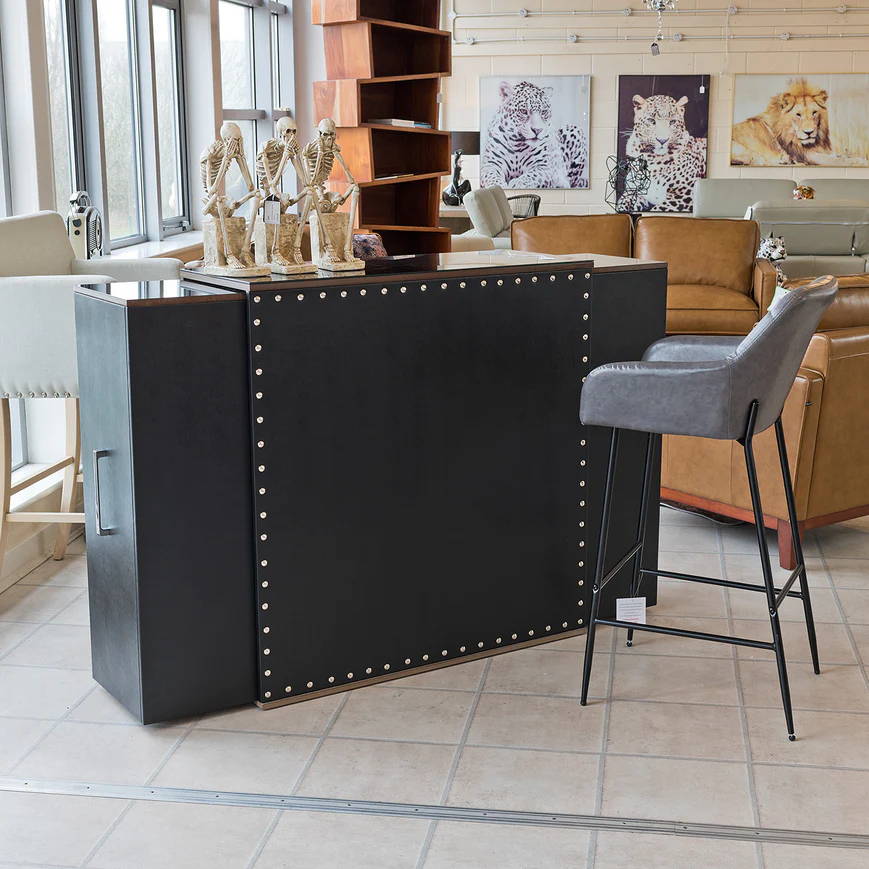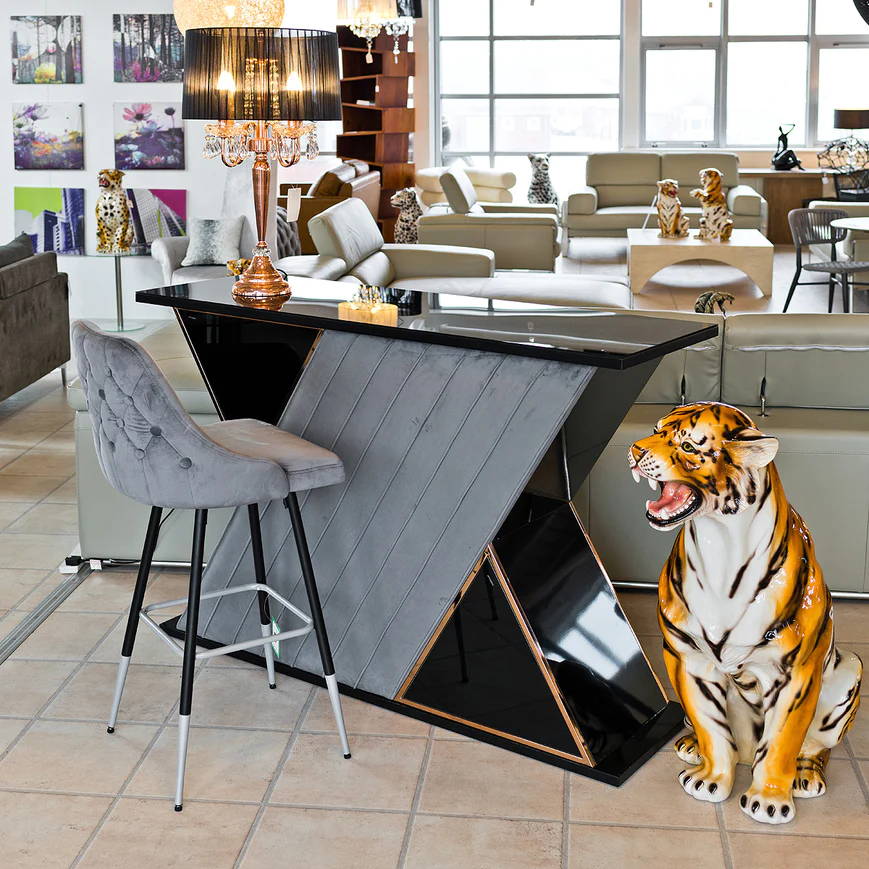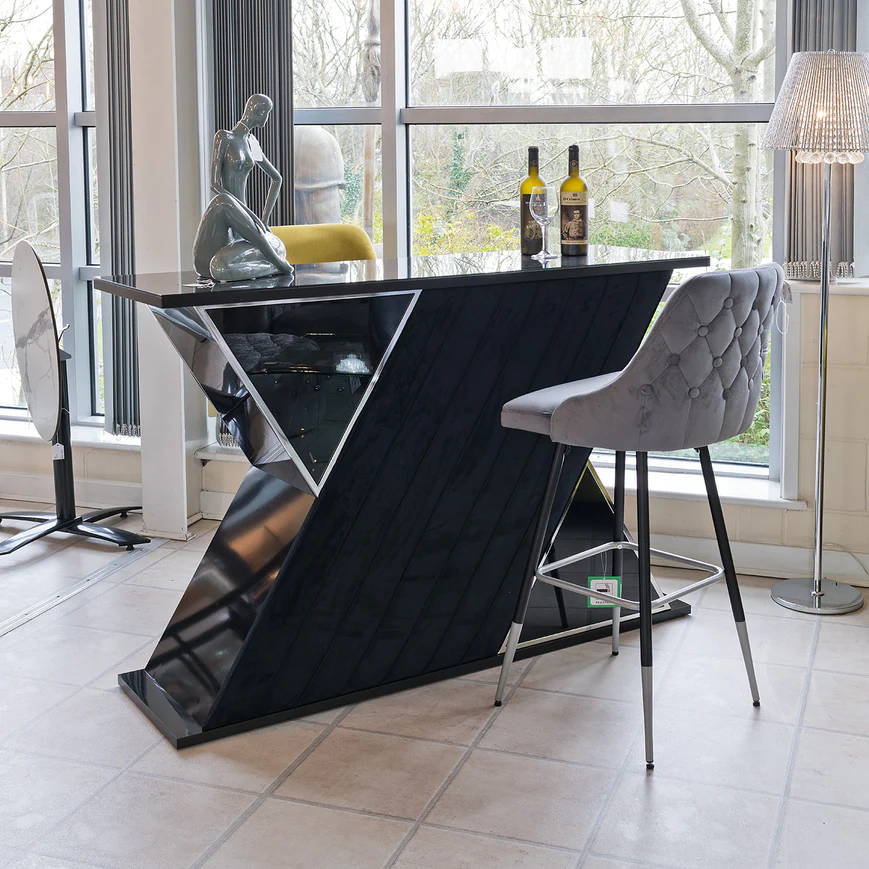A Sip Through Time: The Evolution of Home Bars
In the heart of many British homes lies a cherished space, replete with memories, stories, and an array of bottled spirits: the home bar. More than just a station for concocting drinks, the home bar has undergone a transformative journey, mirroring societal changes, technological advancements, and evolving design sensibilities. This expedition from modest beginnings to its contemporary grandeur offers an intoxicating blend of history, culture, and design.
The Modest Beginnings
The genesis of the home bar in the UK can be traced back to the early 20th century. Amidst the interwar years, with society slowly opening up to the pleasures of domestic entertainment, the British household began to witness the sprouting of liquor cabinets. These cabinets, often clandestine in nature, were small, wooden, and discreet, storing a few cherished bottles, perhaps a decanter, and a handful of glasses.

The Roaring Twenties Influence
With the Roaring Twenties in full swing across the Atlantic, Britain wasn’t immune to its influence. Speakeasies and jazz clubs were blossoming, and the age of cocktail parties had dawned. This era imprinted upon the British psyche a penchant for cocktails, leading to more elaborate home bar setups. The liquor cabinet started giving way to trolleys – gleaming brass or chrome structures that were mobile and could cater to a room full of flapper dresses and tailored suits.
Post-war Changes and Technological Advancements
The aftermath of World War II brought with it a collective desire to rebuild and relish domestic life. The home bar began to be viewed less as a luxury and more as a staple of the British household. Technological advancements played their part, with refrigeration allowing for a wider variety of mixers and drinks to be stored. The bar's location started to shift from living rooms to dedicated spaces, often in basements or specially designed corners.
The 70s and 80s: A Period of Extravagance
The 1970s and 80s witnessed an era of unbridled extravagance in the world of home bars. Plush leather stools, neon signs, mirrored backdrops, and even optics for bottles became common sights. This period saw home bars shedding their subdued, utilitarian nature, and embracing an almost theatrical persona.
The Minimalist Wave
As the new millennium dawned, there was a discernible shift in design sensibilities. Inspired by Scandinavian aesthetics and a collective desire for 'less is more', the home bar underwent a transformation. Sleek lines, muted tones, and an emphasis on quality over quantity became the order of the day. The focus shifted from having an array of spirits to showcasing a few select, premium bottles.
The Modern Home Bar: A Blend of Past and Present
Today's home bar is an eclectic mix of history and modernity. While there’s a nod to vintage designs, with many opting for retro bar carts or art-deco themes, the integration of technology, such as bespoke cooling systems or LED-lit shelves, is evident. The modern British homeowner seeks a bar that’s both a conversation starter and a functional space.
The Cultural Resonance
Beyond the tangible elements of wood, glass, and spirit, the home bar holds a deeper cultural significance. It has been a silent witness to Britain's changing social fabric – from the early cocktail parties of the 20s, the family gatherings of the post-war era, to the present-day soirées. It reflects the nation's evolving relationship with alcohol, entertainment, and domesticity.
Moreover, the British affection for pubs is echoed in the home bar. It’s a personal space, offering the warmth and camaraderie of a pub, but within the sanctity of one's abode. The home bar is not just about the drinks; it's about the stories shared, the laughter echoed, and the bonds strengthened.

A Dive Deeper into the Social Fabric: Home Bars and British Society
The intrinsic relationship between Britain's home bars and its societal makeup offers a fascinating insight into more than just evolving design trends. It's a glimpse into the very ethos of the British people and their evolving relationship with entertainment, camaraderie, and relaxation.
A Symbol of Class Mobility
Historically, the bar was a domain of the elite. Those grand manors and sprawling estates of the British upper class often featured opulent rooms dedicated to the enjoyment of fine spirits. However, as the 20th century progressed, with increasing economic mobility and the burgeoning middle class, the home bar became an emblem of attainable luxury. Its emergence in middle-class homes was a testament to Britain's changing socio-economic landscape, signifying not just affluence but also aspiration.
From Public to Personal
The British pub, a staple in the cultural lexicon, has been a gathering spot for communities, a place where stories were exchanged, and friendships fostered. As home bars grew in prominence, they brought some essence of the pub's communal spirit into the domestic realm. In essence, they allowed homeowners to recreate that sense of community, but on their terms and turf. It underscored a subtle shift from public revelry to intimate gatherings, where one could control the ambiance, guest list, and indeed, the quality of spirits.
The Gender Dynamics
It's worth noting the gender dynamics surrounding home bars. Historically, bars and pubs were predominantly male domains. However, as home bars found their way into the mainstream, they played a role in democratising this space. Women became more involved, not just as attendees but as hosts and connoisseurs. The home bar, in many ways, contributed to reshaping some of the traditional gender norms associated with drinking spaces.
Evolving Tastes and Global Influences
Post World War II, Britain saw an influx of influences from its former colonies and beyond. The drinks cabinet began to reflect this diversity. Whisky from Scotland sat next to rum from the Caribbean, gin found a companion in tequila, and global liquors like sake made an appearance. The home bar became a microcosm of Britain's evolving palate and its increasing global interconnectedness.

In Conclusion
Charting the journey of home bars is akin to traversing through Britain's socio-cultural timeline. It offers a tantalising glimpse into changing tastes, technological innovations, and societal norms. From the discreet liquor cabinets of the early 20th century to the resplendent setups of today, the home bar has, quite fittingly, matured like a fine wine. And as we raise our glasses in these personal havens, we do so not just to the present moment, but to a rich tapestry of history that has shaped our very act of toasting. Cheers to that!
Are you looking for a Pool Table? check out our pool tables range Pool Tables
